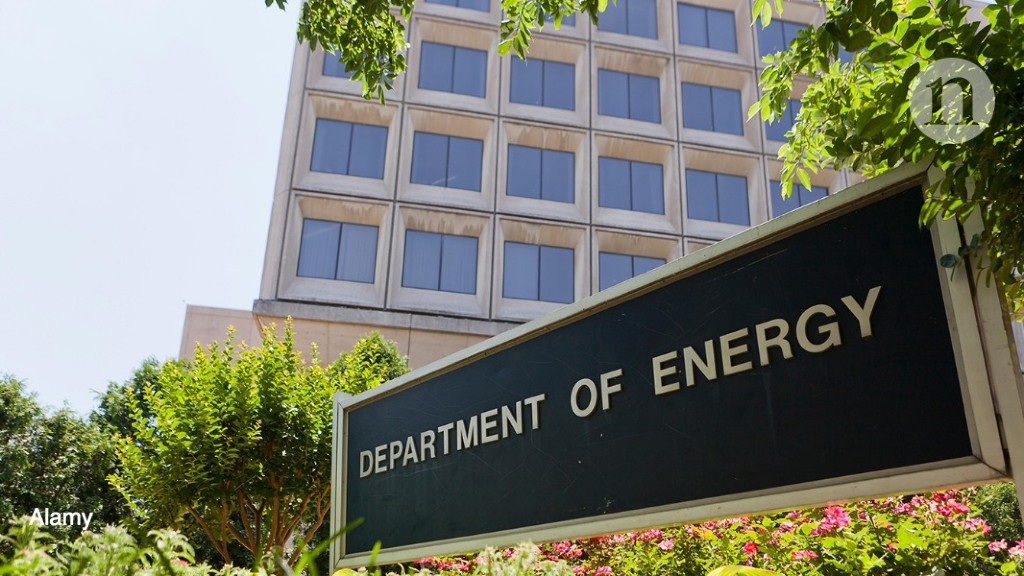DOE Report Finds Clean Energy Jobs Grew in Every State In 2022

America’s Energy Workforce Added Almost 300,000 Jobs in 2022 with an Increasing Percent in Clean Energy, Union Employers Invest More in Diversity and Inclusion Efforts, and Union Employers Report Less Difficulty Hiring Qualified Workers
The U.S. Department of Energy (DOE) released the 2023 U.S. Energy and Employment Report (USEER), a comprehensive study designed to track and understand employment trends across the energy sector. As the private sector continues to announce major investments in American-made energy thanks in large part to President Biden’s Investing in America agenda, the 2023 USEER shows that the energy workforce added almost 300,000 jobs (+3.8% growth) in 2022.
Clean energy jobs increased in every state reflecting increased investments due to President Biden’s Investing in America agenda. Clean energy jobs grew 3.9% adding 114,000 jobs nationally, increasing to over 40% of total energy jobs. Clean energy technologies, such as solar and wind, accounted for more than 84% of net new electric power generation jobs, adding over 21,000 jobs (+3.6% growth), and jobs related to zero emissions vehicles saw nearly 21% growth, adding over 38,000 jobs. In achieving the President’s goal of 100% clean electricity by 2035 and a net zero economy by 2050, through the Invest in America Agenda, energy jobs are expected to grow across the nation. The growth in clean energy jobs was faster than last year’s robust overall job growth, reflecting increased investments and jobs that’s in large parts to the President’s Investing in America agenda.
“Today’s report shows that the clean energy transition is accelerating, with job growth across every pocket of America, and that unionized employers are filling these new positions with much more ease than non-unionized employers,” said U.S. Secretary of Energy Jennifer M. Granholm. “Thanks to President Biden’s historic Investing in America agenda, we expect to see steady growth of jobs to make and build a resilient and clean energy system offering good-paying and secure employment opportunities to America’s workers across the country.”
USEER is a summary of national and state-level employment, workforce, industry, occupation, unionization, demographic, and hiring information in key energy technology groups: Electricity Production and Generation; Transmission, Distribution, and Storage; Fuels; Energy Efficiency; and Motor Vehicles and Component Parts. The USEER began in 2016 to better track and understand employment within key energy sectors that have been difficult to impossible to follow using other publicly available data sources. The study combines surveys of businesses with public labor data to produce estimates of employment and workforce characteristics.
See related article: DOE Launches New Energy Earthshot to Decarbonize Transportation and Industrial Sectors
Clean Energy Sector Experiencing Significant Job Growth
- Clean Vehicles: All clean vehicle jobs—those in battery electric, plug-in hybrid, and hydrogen/fuel cell vehicles—exceeded pre-COVID-19 employment levels. The most rapid growth was in battery electric vehicle jobs, which added more than 28,000 jobs (increasing by 27%). This is almost as many added jobs as in the gasoline and diesel vehicle sector, but at a growth rate that was 17 times faster.
- Solar: Solar is the electric power generation technology that employs the most workers. There were 12,000 new jobs in solar in 2022 (+3.7% growth).
- Wind: There were 5,000 new jobs in wind (+4.5% growth).
- Geothermal: The geothermal workforce added 1,000 jobs, growing by 5.0% in 2022.
States Experiencing Rapid Job Growth in the Clean Energy Sector
- Clean energy jobs grew across all 50 states and D.C. The top-three states for clean energy jobs growth are:
- California, which added 13,000 jobs (+3.2%);
- West Virginia, which added 7,000 jobs (+19%); and
- Texas, which added 5,100 jobs (+3.5%).
Energy Workforce Demographics
The 2023 USEER also provides demographic data that can help companies as well as federal, state, and local groups better understand workforce trends and shed light on opportunities for workforce recruitment and training programs to build a more representative workforce.
- Although women make up just 26% of the energy workforce, they made up more than half of the net 300,000 energy jobs added in 2022.
- The energy workforce is younger than the national workforce average. Only 17% of the energy workforce is older than 55, compared to 24% in the national workforce. In fact, 30% of the energy workforce is under 30 years old—much more than the national average (22%).
- Black or African American workers as well as Hispanic or Latino workers were underrepresented across the energy workforce.
- Veterans made up 9% of the U.S. energy workforce, higher than their representation in the overall U.S. economy (5%).
- Union employers had formal diversity, equity, inclusion, and access plans to increase hiring and retention of a diverse workforce at a higher rate than of non-union employers. Union employers were 50% more likely to have a policy to recruit women, two times more likely to have a policy to recruit persons of color, and 2.5 times more likely to have a policy to recruit LGBTQ+ people.
Energy Jobs and Union Labor
- 11% of energy workers represented by a union were 11%, over 50% higher than private sector average, where only 7% of workers are unionized.
- Energy sector employers are seeing the benefits of strong unions. Employers with unionized workforces reported substantially less difficulty with hiring skilled workers than non-unionized employers. For instance, only 31% of union employers in construction reported it was “very difficult” to find workers compared to 59% of non-union employers. Unions provide high-quality training to workers through registered apprenticeship programs, providing participating employers with ready access to skilled workers.
- The technology sector with the highest rate of unionization was transmission, distribution, and storage, where 18% of workers were represented by a union. This sector also had the highest percentage of non-white workers (30%, higher than the workforce average of 23%).
“The clean energy sector plays a critical role in combating the ongoing climate crisis as well as promoting job creation and economic development in New Hampshire and across the nation,” said U.S. Senator Jeanne Shaheen (NH), whose long-standing efforts to recommit the administration to collecting data and publishing this annual report help guide policy on energy and workforce development. “This new data from the 2023 U.S. Energy and Employment Report shows strong growth in energy jobs, and as investments from the Bipartisan Infrastructure Law and Inflation Reduction Act really start to gear up, I expect we’ll see this growth accelerate over the next few years.”
“As Co-Chair of the Climate Jobs Task Force, I’ve made it a priority in Congress to help strengthen and expand the transition to clean energy,” said U.S. Representative Nikki Budzinski (IL-13). “I’m pleased to see this report demonstrate that clean energy jobs grew by 3.9 percent in 2022, outpacing overall U.S. employment. These numbers show that the ambitious investments we’re making in clean energy technologies are helping move our economy forward and creating good-paying union jobs in communities across the country.”
“President Biden’s Investing in America agenda and historic investments in energy infrastructure and domestic supply chains are creating unprecedented demand for workers in the energy sector,” said Sean McGarvey, President of the North American Building Trades Unions (NABTU). As the USEER data shows, union employers have a much easier time recruiting and hiring skilled workers and are twice as likely to have explicit strategies for recruiting a diverse workforce, showing that addressing climate, equity, and job quality are compatible goals and strategies.”
Achieving a clean energy transition requires harnessing the talent, grit, and innovative spirit of the diverse American workforce. DOE is dedicated to making sure energy jobs are the jobs people want and that allow workers to advance and prosper. DOE is committed to engaging and investing in a skilled workforce to scale up the development and build out of clean energy technologies. Through USEER, DOE is tracking energy jobs across industries, occupations, and technologies. As more federal and private sector investments break ground, we expect to see energy sector employment continue to increase.












